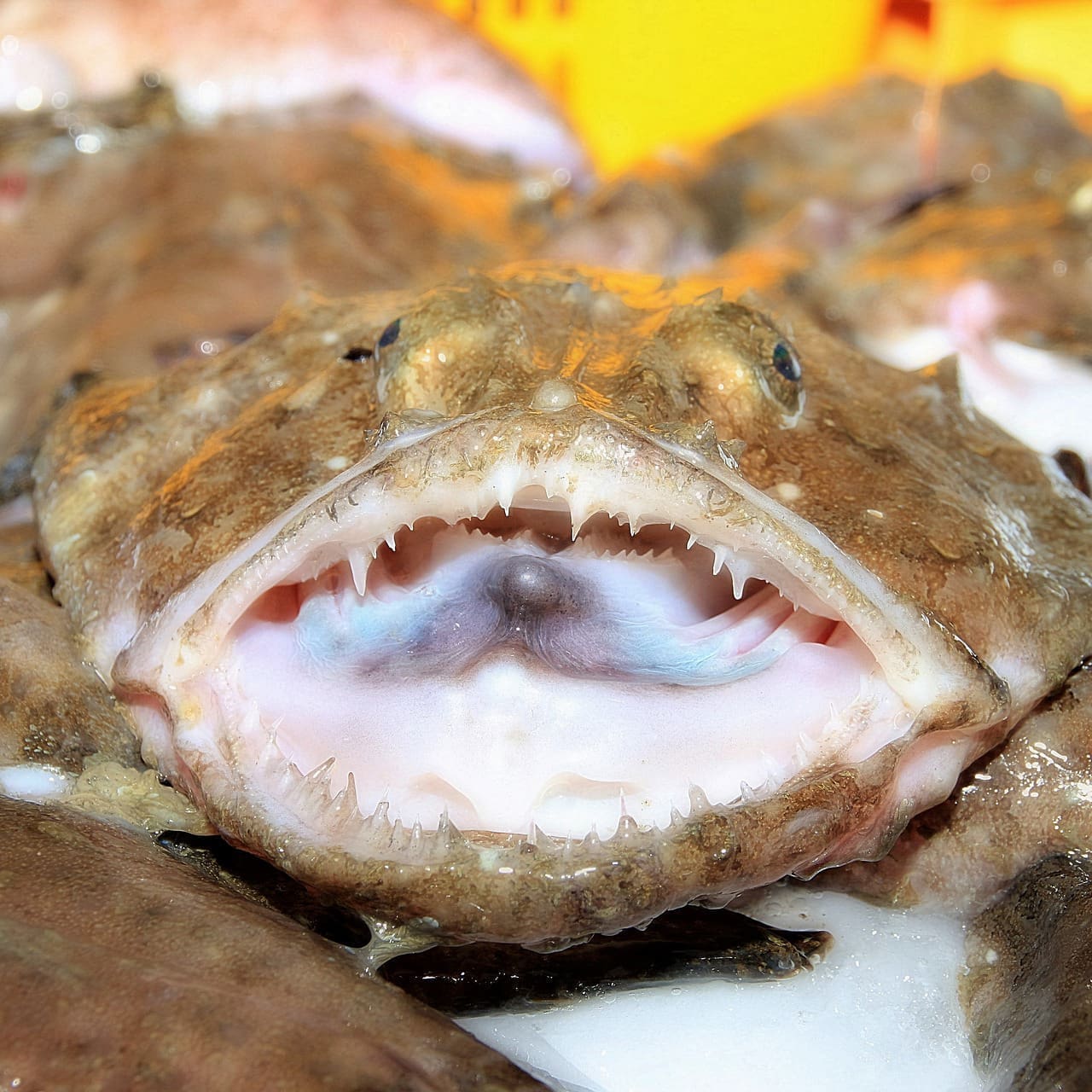Introduction
American Anglerfish, also known as the Monkfish, is a kind of anglerfish defined scientifically as Lophius americanus. These fish are from the Lophiidae family.
Conservation Status
The current conservation status of American Anglerfish shows that they are not endangered and are listed as being of ‘Least Concern’ by IUCN Red List. Efforts are being exerted towards researching and monitoring the stocks and habitats to assure that the species remains plentiful.
Statistics
| Statistic | Average | Range |
|---|---|---|
| Length | 62 cm | 1.5 m |
| Weight | 11kg | 30 kg |
| Average Lifespan | 13-15 years | N/A |
Distribution
Monkfish inhabit the coastal waters of North America from the Gulf of St. Lawrence, Canada, to Cape Hatteras, North Carolina. They do not appear to perform long-distance migrations and remain in the same general area year-round.
Habitats
These benthic fish prefer the mud or sandy bottoms of continental shelves and slopes, down to depths of about 1,800 meters. The temperature range in which they are found is between 2°C – 18°C.
When and Where to See
Price variations and availability suggest that most monkfish are taken in the fall and winter. During the day, they usually remain hidden.
Best Fishing Locations
Here are some of the best fishing locations for American Anglerfish:
1. Northeast U.S Continental Slope.
2. Georges Bank.
3. Gulf of Maine.
4. Atlantic Ocean, off the coast of New Jersey.
Generally, know that these fish prefer deep waters, mainly on the ocean floor.
How to Catch
Monkfish can be baited using mackerel, herring, or squid. Jigging or trolling techniques can be effective. The best time to catch them is during the cool months of fall and winter.
Identification Guide
Their most distinguishing feature is their enormous, wide mouth filled with fang-like teeth. They also have a modified dorsal fin spine known as an esca that helps with “fishing” for prey. In comparison to other species, the Monkfish has a uniquely large and flathead.
Culinary
Monkfish is known for its unique, somewhat sweet taste and firm texture. Common methods to cook it include grilling, baking, and frying.
Additional Information
Monkfish, being opportunistic feeders, eat the most convenient prey, which usually includes shellfish and other fish. The primary predators of the Monkfish are larger fish and marine mammals.
References and Further Reading
1. Integrated Taxonomic Information System (ITIS)
2. NOAA Fisheries
3. IUCN Red List

